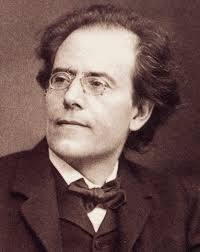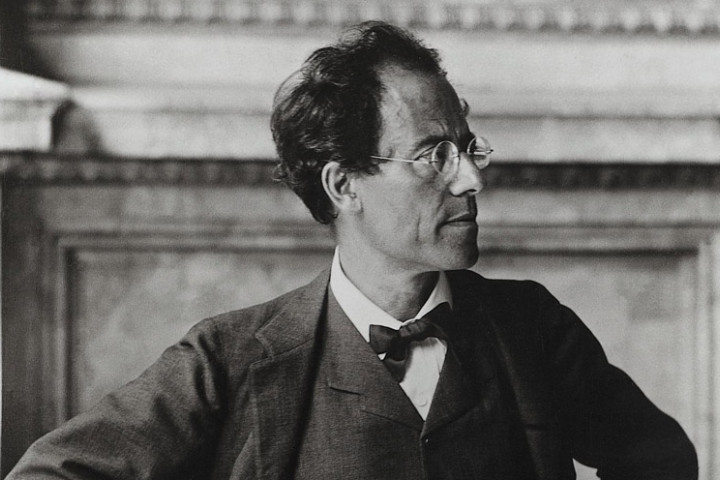The History of Das Lied von der Erde by Gustav Mahler
Introduction
Das Lied von der Erde (The Song of the Earth) is one of Gustav Mahler’s most profound and personal compositions. Blending the genres of symphony and song cycle, this monumental work stands as a bridge between the Romantic and modern eras. Composed between 1908 and 1909, it reflects Mahler’s deep engagement with themes of mortality, nature, and transcendence—crafted during one of the most turbulent periods of his life.
A Time of Personal Crisis
The genesis of Das Lied von der Erde is closely linked to a succession of personal tragedies in Mahler’s life. In 1907, he suffered the devastating death of his eldest daughter, Maria Anna, from scarlet fever and diphtheria. Soon after, he was diagnosed with a severe heart condition. Additionally, he was forced to resign as director of the Vienna Court Opera, a position he had held with great pride.
These events led Mahler to contemplate the fragility of life and the inevitability of death. It was during this period of emotional and spiritual crisis that he encountered Hans Bethge’s collection Die chinesische Flöte (The Chinese Flute), a volume of free German translations of ancient Chinese poetry. Mahler was deeply moved by the bittersweet beauty and philosophical depth of these texts, which became the inspiration for Das Lied von der Erde.
A “Symphony for Tenor, Alto (or Baritone), and Orchestra”
Mahler described Das Lied von der Erde as a “symphony for tenor, alto (or baritone), and orchestra.” However, unlike his earlier symphonies, this work consists of six songs, each based on Chinese poems from Bethge’s collection. It represents a hybrid form, combining the structural ambitions of the symphony with the emotional immediacy of the lied (art song).
The six movements are:
- Das Trinklied vom Jammer der Erde (The Drinking Song of Earth’s Sorrow)
- Der Einsame im Herbst (The Solitary One in Autumn)
- Von der Jugend (Of Youth)
- Von der Schönheit (Of Beauty)
- Der Trunkene im Frühling (The Drunkard in Spring)
- Der Abschied (The Farewell)
Each movement explores aspects of human existence—joy, beauty, loss, and the fleeting nature of life—culminating in the final, expansive movement, Der Abschied, which meditates on death and eternal return with sublime resignation.
Innovations and Structure
Mahler’s orchestration in Das Lied von der Erde is both lush and intimate. He often pares down the orchestra to chamber-like textures, allowing the vocal lines to shine through. The alternation between the two vocal soloists brings contrast and variety, while the overall architecture of the work is symphonic in scope, particularly with the weight and length of the final movement.
The sixth movement, Der Abschied, is nearly as long as the first five combined. It interweaves two separate poems and includes original lines by Mahler himself. This movement is regarded as one of the most moving farewells in all of classical music, ending with the repeated word “ewig” (“forever”), fading into silence—a musical depiction of transcendence.
Mahler’s Superstition and the “Ninth Symphony Curse”
Although Das Lied von der Erde is effectively a symphony, Mahler avoided numbering it as his ninth. He was deeply superstitious and aware of the so-called “curse of the ninth,” referring to the idea that no major composer after Beethoven had successfully written more than nine symphonies (Schubert, Bruckner, and Dvořák all died after their ninth). Mahler considered Das Lied von der Erde as a symphony “in all but name,” and proceeded to write his Symphony No. 9 afterward.
Premiere and Reception
Mahler did not live to hear Das Lied von der Erde performed. He died in 1911, and the work premiered posthumously on November 20, 1911, in Munich. The performance was conducted by Bruno Walter, one of Mahler’s most trusted protégés. It was immediately recognized as a masterpiece, though its deeply introspective and philosophical nature made it different from Mahler’s more dramatic symphonic works.
Today, Das Lied von der Erde is widely regarded as one of Mahler’s greatest achievements—an intensely emotional, deeply philosophical meditation on life and death. It stands as a testament to his artistic maturity and spiritual depth.
Legacy
Das Lied von der Erde holds a unique place in the history of Western music. It challenged the boundaries of symphonic form and opened new expressive possibilities for the 20th century. Composers such as Alban Berg, Arnold Schoenberg, and Benjamin Britten were profoundly influenced by its musical language and emotional range.
Beyond its structural innovation, the work speaks to the universal human experience—our joy, our grief, our longing for eternity. In its final pages, as the music gently dissolves into silence, Mahler leaves us not with despair, but with acceptance and peace. The Earth sings on.


Comments are closed